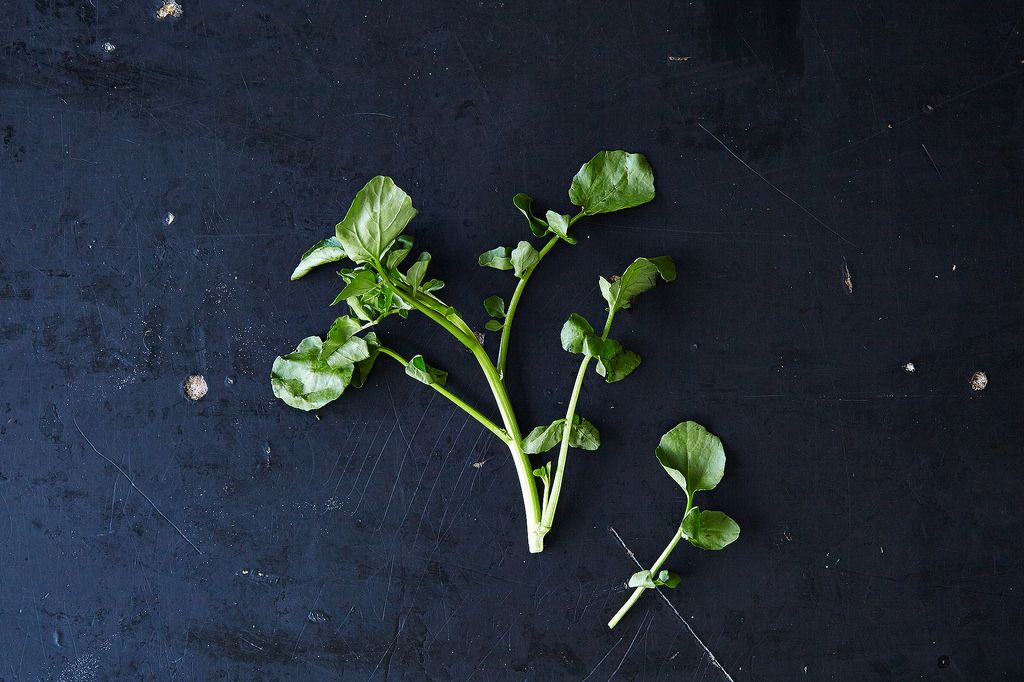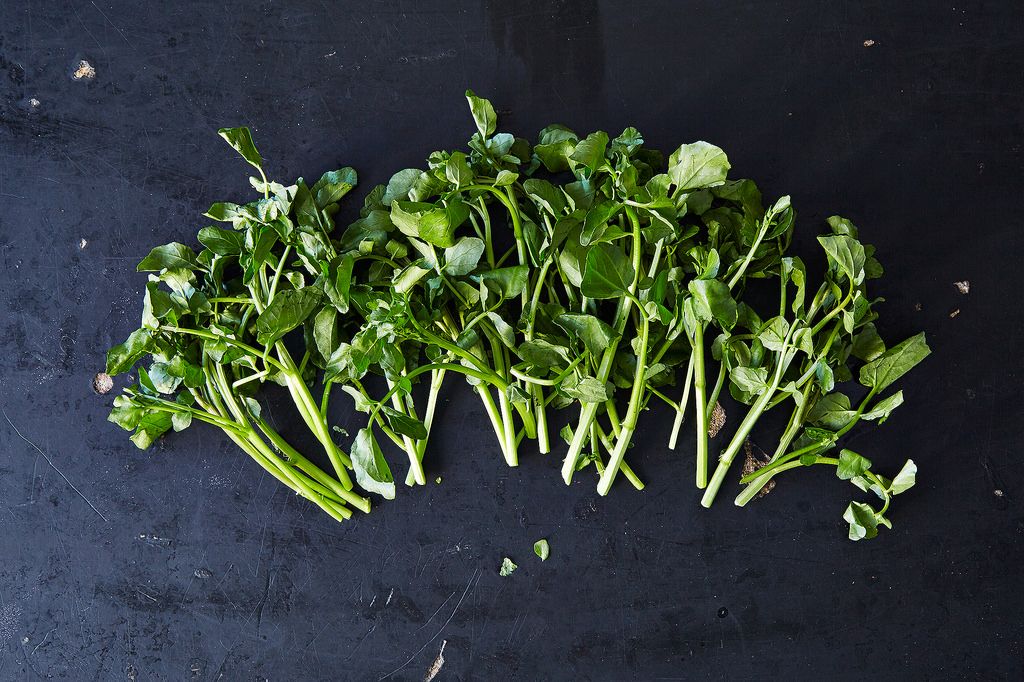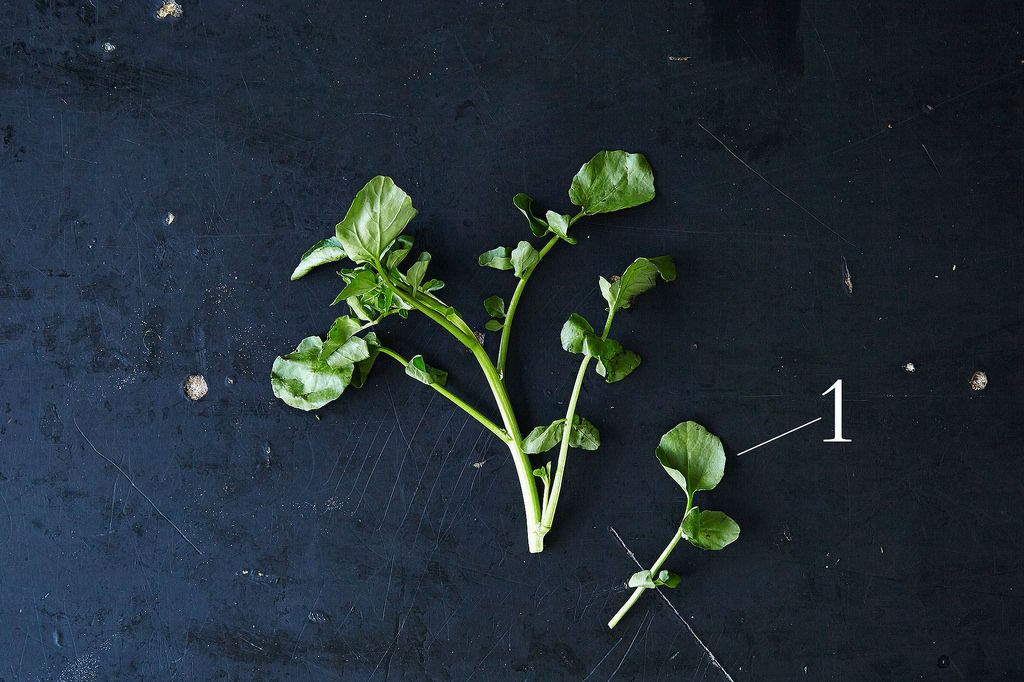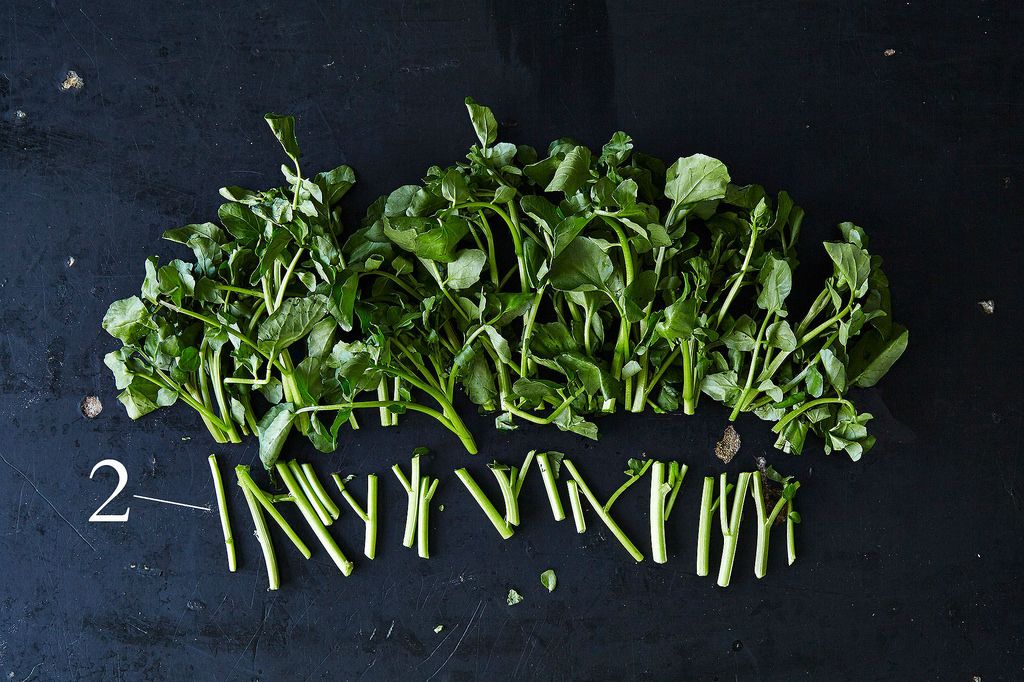Every week we get Down & Dirty, in which we break down our favorite unique seasonal fruits, vegetables, and more.
Today: The delicate green with a not-so-delicate flavor.

Watercress is one of the oldest leafy greens consumed by humans, and like so many other vegetables, it has had its fair share of purported benefits throughout the years. In 75 Exceptional Herbs, Jack Staub says that the vitamin and nutrient content of watercress and other cresses meant that, historically, they were thought to boost brain power—hence an ancient Greek proverb urging to “eat cress, and learn more wit.” But perhaps the best claim comes from Francis Bacon at the turn of the seventeenth century. The English philosopher and scientist said: “The eating of watercress doth restore the wanted bloom to the cheeks of old-young ladies.” What's next? An anti-aging cream with watercress extract?
As its name suggests, watercress is an aquatic (or semi-aquatic) member of the Brassicaceae family. And like other family members with a bite (think arugula, wasabi, and horseradish), watercress’s delicate leafy greens pack a peppery punch. As Deborah Madison notes, “This is hardly a timid family.”

You should be able to find rubber-banded bunches of watercress in a well-stocked grocery store year-round. You’ll likely have to hang tight for a few more weeks until you can pick it up at your farmers market, though. But when the time arrives, and if you’re lucky, you might also find some vendors offering small-leaved wild watercress. Deborah Madison says: “When that happens, it’s a shame to do anything with it but eat it as a salad.”
A taste of wild watercress from the farmers market might have you hooked. If you get the urge to start foraging, resist it: It’s best to leave the procuring of wild watercress to the experts. Author and food critic Florence Fabricant shares a lesson learned from Andy Brown, a partner at B&W Quality Growers, the world’s largest grower of watercress: “Eating wild watercress can be as risky as nibbling a foraged mushroom. It’s not the watercress, he said; it’s the environment. To be safe, the plants, which actually grow in water, must be right at the source of a spring before it can be contaminated by parasites carried by tiny snails or livestock or other animals. In some areas, wild cress may also absorb high levels of heavy metals, like copper.” Note that this caution applies to foraging for wild watercress, not to the watercress you buy in a store.
More: Learn more about where the wild foods are—and what to do with them.
You might also come across the related land cress (also called upland cress, among other names). It makes a fine substitute for watercress and, depending on your penchant for a spicy bite, it might be a better choice for some applications. Deborah Madison notes: “Land cresses, and there are a number of them, are far more peppery than the now rather tame hydroponically grown watercress that one buys, its roots still intact and much of its fire put out.”

Most watercress that you pick up at the grocery store will have large, round leaves (1). Look for dark green, perky bunches of watercress, and avoid any that are yellowing, wilting, or slimy.
To store watercress, treat it like a soft-stemmed herb (like parsley, cilantro, and basil) and store it in the fridge in a jar of water loosely covered in plastic. When you're ready to use it, you’ll most likely want to cut off the tough part of the stem (2, below), leaving only the tender stems. (If you’ll be stir-frying the watercress, it's fine to leave them as is.)

Watercress is a versatile little vegetable: You can use it anywhere you'd use an assertive green, or you can treat it more like a herb. Here are 10 ideas to get you started:
- Pair watercress with seafood like squid, trout, sardines, or tuna.
- Its peppery nature mixes well with meat, too. Try Amanda Hesser’s All-in-One Salad with lamb, chicken, and salumi, or stick to one meat at a time and use watercress in a grilled flank steak salad.
- Blend it into a sauce or soup.
- Or, make a watercress purée. Fun fact: The first time Amanda’s then boyfriend, now husband cooked dinner for her, he made a purée of peas and watercress.
More: Anxious to hear more? Read Cooking for Mr. Latte for more of Amanda Hesser's love story.
You'll want to keep using watercress once warmer weather arrives, too. Come summertime, pair watercress with corn, melon, and peaches.
Tell us: How do you like to use watercress?
Photos by Bobbi Lin





See what other Food52 readers are saying.